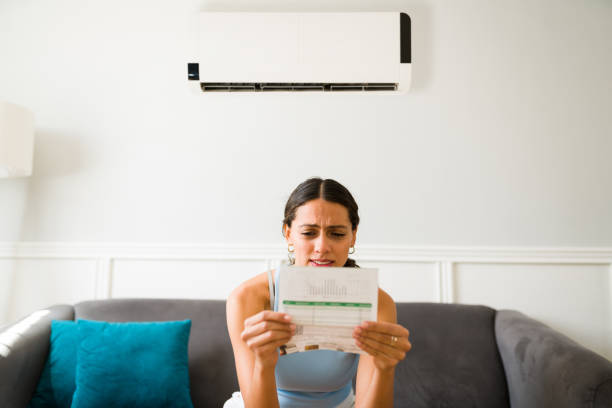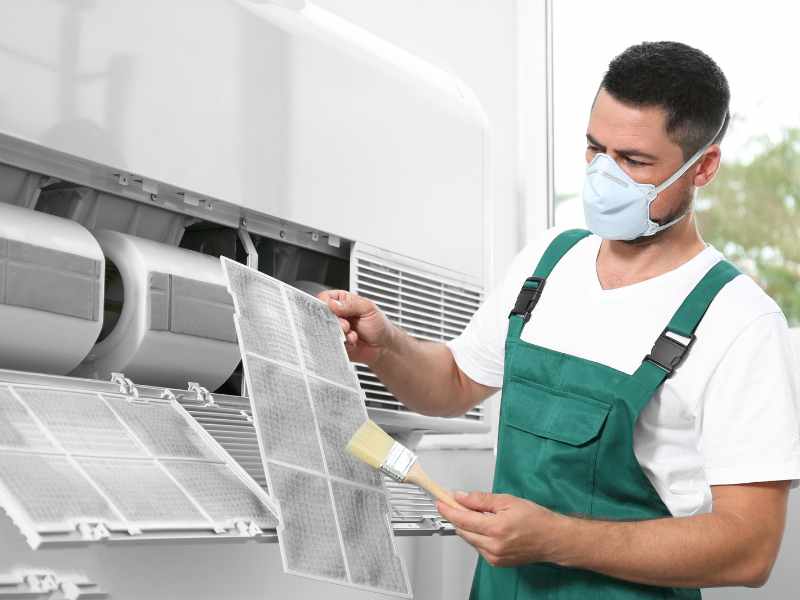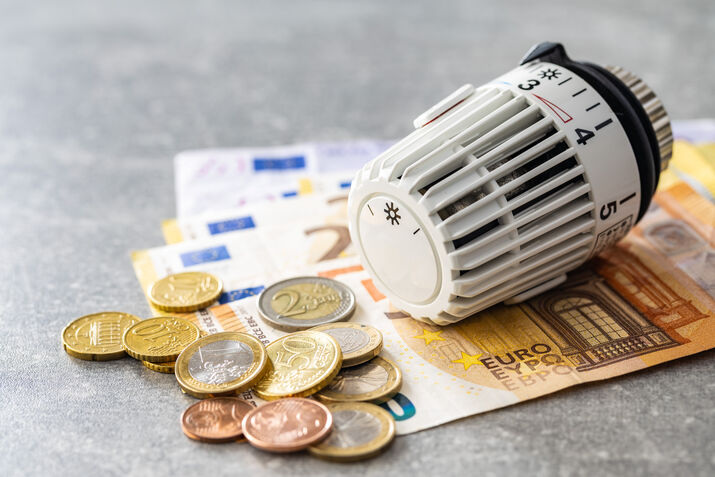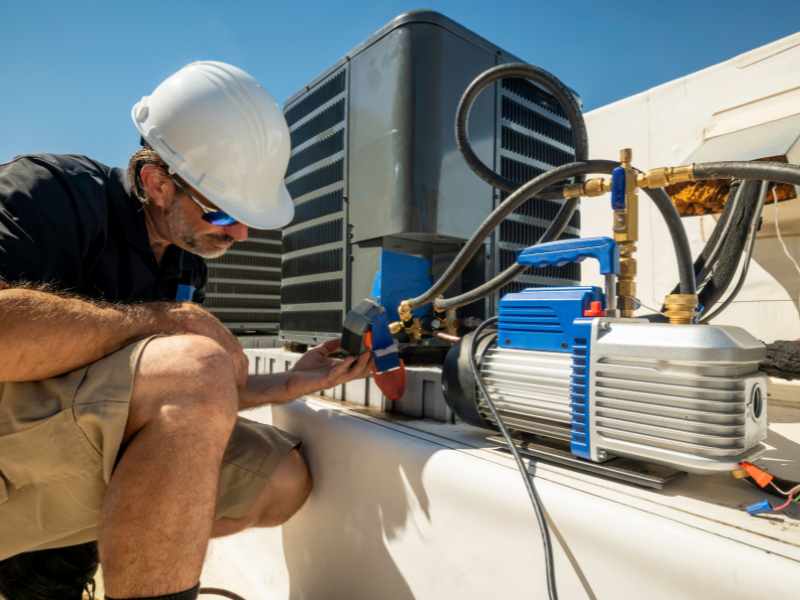Are HVAC System Upgrades Worth the Investment?
Are HVAC system upgrades the smart choice for your home comfort and wallet? If you’re experiencing frequent breakdowns, rising energy bills, or inconsistent temperatures, upgrading your system might be the solution. Modern systems deliver enhanced comfort, improved energy efficiency, and significant cost savings. In this comprehensive guide, we’ll explore warning signs that indicate it’s time for an upgrade, practical ways to improve efficiency, and how a new system can meet your home’s needs while reducing utility bills and improving indoor air quality.
Understanding HVAC System Upgrades and Their Importance
HVAC system upgrades maintain optimal home comfort while maximizing energy savings. Your heating and cooling equipment works year-round, keeping your household comfortable during extreme weather. Aging systems operate inefficiently, leading to energy wastage and increased costs. As of 2023, all newly manufactured systems must meet updated SEER2 efficiency standards—minimum 13.4 SEER2 in northern regions and 14.3 SEER2 in Southern regions—ensuring any new installation will be significantly more efficient than older models.
Upgrading means replacing or modernizing key components for efficient operation. Today’s energy-efficient models incorporate advanced technology and smart features unavailable even five years ago, providing more precise temperature control, reducing allergens, and contributing to healthier indoor environments.
Key Benefits of Modern HVAC Systems
Investing in a new HVAC system means upgrading to:
- Improved energy efficiency, reducing consumption by 20-40%
- Enhanced comfort with consistent temperatures and superior ventilation
- Better air quality through advanced filters that capture pollutants and debris
- Lower utility bills from reduced energy waste
- Increased home value, making your property more attractive to buyers
- Eco-friendly operation, reducing your carbon footprint
Energy Efficiency: The Leading Reason for HVAC Upgrades

Energy efficiency drives most homeowners to consider HVAC system upgrades. An efficient system saves money, performs better, lasts longer, and provides superior comfort. Energy-efficient HVAC systems use advanced technology to maintain comfortable temperatures while consuming significantly less energy.
How Energy Efficient Models Save You Money
Modern HVAC systems deliver improved energy efficiency through high-efficiency heat pump technology, variable-speed motors, and smart thermostat integration. As of 2025, all new systems use environmentally friendly refrigerants like R-454b or R-32, replacing the older R-410a refrigerant that had a higher global warming potential. These efficient units adjust output based on your home’s specific requirements, avoiding energy wastage common in older, single-stage systems.
Homeowners upgrading from 10-year-old systems to new, energy-efficient models typically see energy bills drop 20-40%, translating to $200-$500 annually for most homes. Department of Energy data shows upgrades to modern high-efficiency units (16+ SEER2) can save up to $1,000 yearly in extreme temperature areas. Over your HVAC unit’s typical 15-20 year lifespan with proper maintenance, these savings significantly exceed upfront installation costs.
Reducing Your Carbon Footprint Through Efficient Heating and Cooling
Upgrading to an energy-efficient system helps the planet beyond personal savings. Efficient HVAC equipment reduces energy consumption, meaning less demand on power plants and a smaller carbon footprint. Choosing the best home HVAC system options with high efficiency ratings demonstrates environmental responsibility while enjoying enhanced comfort.
Warning Signs Your HVAC System Needs an Upgrade

Recognizing when your current system needs replacement can save you from frequent repairs and help you avoid costly emergency breakdowns. Here are the key warning signs that indicate it’s time to consider HVAC system upgrades:
Watch for these critical warning signs that indicate your system needs attention:
Age and Performance Issues
- System age exceeds 15 years: Older systems operate 30-50% less efficiently than modern equipment
- Inconsistent temperatures: Hot and cold spots throughout your home signal distribution problems
- Longer heating/cooling cycles: System runs constantly without reaching the desired temperature
- Outdated refrigerant: Systems using R-22 refrigerant (phased out in 2020) face expensive repair costs
- Declining efficiency ratings: Pre-2010 systems typically have SEER ratings of 8-10 versus today’s 13.4-20+ SEER2
Frequent Repairs and Increasing Costs
- Multiple service calls per year: More than 2-3 repairs annually suggest systemic problems
- Repair costs exceed 50% of replacement value: The “5000 rule” – if age multiplied by repair cost exceeds $5,000, replace
- Parts becoming obsolete: Difficulty finding replacement parts for older models
- Extended downtime: Waiting for parts or repeated failures disrupts comfort
- Warranty expiration: Most manufacturers offer 10-year warranties; older systems lack coverage
Rising Energy Bills
- Year-over-year increases of 10-15%: Without usage changes, it indicates declining efficiency
- Bills higher than neighbors’: Comparable homes should have similar energy costs
- Seasonal spikes: Extreme bills during peak summer or winter months
- Inefficient operation patterns: The System runs constantly without adequate temperature control
Indoor Air Quality: A Crucial Consideration

HVAC system upgrades significantly impact indoor air quality, which is essential for health and comfort. Modern systems with advanced air filters capture allergens, dust, pollutants, and even formaldehyde in the air, benefiting everyone—especially those with allergies or respiratory issues.
How New Systems Improve Air Quality
New HVAC systems incorporate advanced filtration technology, removing airborne particles more effectively. High-efficiency filters capture smaller particles, reducing allergens. The Environmental Protection Agency emphasizes that proper HVAC maintenance and upgrades significantly improve indoor air quality. Modern systems better control humidity levels, preventing mold growth and maintaining fresh air circulation.
Enhanced ventilation features ensure outdoor air is properly filtered and mixed with indoor air, avoiding stale environments common in homes with outdated systems. This creates healthier living spaces, significant for children, elderly family members, and those with pre-existing health conditions.
Types of HVAC Upgrades to Consider
Not all HVAC system upgrades require a complete system replacement. Understanding your options helps you choose solutions that meet your specific needs and budget. Below is a comprehensive comparison of HVAC system types:
| System Type | Average Lifespan | Efficiency Range | Best For | Average Cost | Key Advantages |
| Central AC + Gas Furnace | 15-20 years | 13.4-20 SEER2 / 80-98% AFUE | Homes with existing ductwork | $5,000-$10,000 | Reliable, powerful heating and cooling |
| Heat Pump (Air Source) | 15-18 years | 14.3-20+ SEER2 / 7.5-10 HSPF2 | Moderate climates, eco-conscious homes | $5,500-$12,000 | Heats and cools, highly efficient, eligible for $2,000 tax credit |
| Ductless Mini-Split | 15-20 years | 16-25 SEER2 | Homes without ductwork, room additions | $3,000-$8,000 per zone | Zone control, no ductwork needed, quiet operation |
| Geothermal Heat Pump | 20-25 years | 300-600% efficient | Long-term investment, stable temps | $18,000-$30,000 | Highest efficiency, 30% tax credit, lowest operating costs |
| Packaged HVAC System | 12-15 years | 13.4-16 SEER2 | Small homes, limited indoor space | $4,000-$8,000 | Space-saving, easier installation |
Full System Replacement
Replacing your entire heating and cooling system provides maximum benefits. Complete split system AC installation or new heat pumps deliver optimal performance, system efficiency, and the latest smart technology features. While upfront costs are higher, long-term savings and improved comfort make this worthwhile.
Component Upgrades
Upgrading specific components can significantly improve efficiency without full replacement:
| Component | Benefits | Impact on Efficiency |
| Smart Thermostat | Precise temperature control, scheduling, and remote access | 10-15% energy savings |
| High-Efficiency Air Filters (MERV 13+) | Improved air quality, better airflow, allergen reduction | 5-10% efficiency improvement |
| Ductwork Sealing | Eliminates leaks, improves distribution | Up to 20-30% energy reduction |
| Upgraded Insulation | Maintains temperatures, reduces system load | 15-25% heating/cooling cost reduction |
Smart Technology Integration
Adding a wifi air conditioner controller or smart thermostat provides enhanced convenience and control. These technologies learn preferences, adjust automatically, and enable remote home comfort management, saving energy during absences.
Financial Incentives and Long-Term Savings

The financial case for HVAC system upgrades extends beyond monthly energy savings, with multiple programs making modernization more affordable.
Tax Credits and Rebates
Federal tax credits, state rebates, and local utility programs incentivize energy-efficient equipment installation. Under the Inflation Reduction Act’s 25C provision, homeowners can claim up to $2,000 for qualifying heat pumps or up to $1,200 for other energy-efficient improvements. Critical: Systems must be installed by December 31st, 2025, to qualify. Starting in 2025, manufacturers must provide a Product Identification Number (PIN) for eligible products. The U.S. Department of Energy offers comprehensive information on available federal tax credits and utility rebates.
Check qualifying incentives before investing. Many programs require certified professional installation and specific efficiency ratings.
Calculating Your Return on Investment
Determine if HVAC upgrades make financial sense by calculating potential ROI:
- Current energy costs: Review the past year’s utility bills
- Expected savings: Efficient systems typically save 20-40% on energy bills
- Available incentives: Subtract tax credits and rebates from the total cost
- Payback period: Divide net investment by annual savings
Most homeowners see ROI within 6-10 years through energy savings, then continue enjoying lower bills for the system’s remaining 15-20 year lifespan. Federal tax credits (up to $2,000 for heat pumps) plus state rebates can shorten payback periods significantly.
Maximizing Efficiency Through Proper Installation and Maintenance
Even the most efficient unit won’t perform optimally without proper installation and regular maintenance, factors as crucial as choosing the right equipment.
The Importance of Professional Installation
Proper installation ensures your system operates at rated efficiency. Qualified professionals assess your home’s square footage, insulation, and specific needs to determine correct equipment sizing. Oversized or undersized units lead to inefficiency, comfort issues, and premature wear.
Professional installers ensure properly sealed ductwork, correct refrigerant levels, and seamless component integration. Callidus Air specializes in expert installation, maximizing system performance from day one.
Regular Maintenance: Essential for Longevity
Schedule maintenance twice per year—once before summer and once before winter—to maintain optimal performance. A comprehensive maintenance routine includes:
Monthly Homeowner Tasks:
- Replace air filters: Check monthly, replace every 1-3 months depending on usage and filter type
- Clear outdoor unit: Remove leaves, debris, and vegetation within 2 feet of the unit
- Check thermostat batteries: Replace annually or when the low battery indicator appears
- Inspect vents and registers: Ensure furniture or curtains aren’t blocking airflow
- Listen for unusual noises: Grinding, squealing, or banging sounds require immediate attention
Biannual Professional Maintenance:

- Spring tune-up (before cooling season): Clean condenser coils, check refrigerant levels, test capacitors
- Fall tune-up (before heating season): Inspect heat exchangers, test ignition systems, and clean burners
- Ductwork inspection: Check for leaks, proper insulation, and adequate airflow
- Electrical connection testing: Tighten connections, measure voltage and current
- Condensate drain cleaning: Prevent clogs that cause water damage and system shutdowns
- System controls verification: Test starting cycle, operation, and shut-off sequence
- Thermostat calibration: Ensure accurate temperature readings and proper cycling
This proactive approach prevents frequent breakdowns, extends equipment life, and ensures continued efficient operation. Well-maintained, efficient systems deliver consistent comfort while keeping energy costs low year-round.
Choosing the Right HVAC System for Your Home
Selecting appropriate equipment requires considering multiple factors beyond price. The right choice depends on your home’s characteristics and household needs.
Assessing Your Home’s Requirements
Consider climate, home size, insulation quality, and heating/cooling area requirements. Homes in regions with extreme weather need robust systems, while moderate climates benefit from heat pumps providing efficient heating and cooling. Building age, window quality, and existing ductwork influence optimal solutions.
Comparing Leading Brands and Technologies
Research the best central AC brands for reliable manufacturers known for quality and longevity. Look for high SEER2 (Seasonal Energy Efficiency Ratio 2) ratings—higher ratings mean greater efficiency. As of 2023, all new systems use SEER2 ratings, providing more accurate real-world efficiency measurements than the old SEER standards.
In 2025, minimum SEER2 ratings are 13.4 in northern regions and 14.3 in southern areas, while premium systems reach 20+ SEER2. ENERGY STAR certified systems meet strict efficiency guidelines, providing significant savings versus standard models. Modern systems feature variable-speed technology, two-stage cooling, and enhanced dehumidification, contributing to overall comfort and efficiency.
Environmental Impact and Sustainable Choices
HVAC system upgrades offer opportunities for environmentally friendly choices, benefiting both households and the planet. As climate change awareness grows, more homeowners reduce their environmental impact through smart equipment selections.
Reducing Energy Consumption and Emissions
Energy-efficient models consume less electricity, reducing greenhouse gas emissions from power generation. Upgrading to high-efficiency systems actively reduces climate change contributions while delivering lower energy bills and improved comfort. In 2025, all new systems will use next-generation refrigerants (R-454b or R-32) with significantly lower global warming potential than the older R-410a refrigerant.
Heat pump technology deserves special recognition for sustainability. These systems move heat rather than generate it, ranking among the most efficient options available. In many climates, properly implemented heat pumps can replace both air conditioners and furnaces, simplifying systems while maximizing efficiency.
Taking the Next Step: Making Your HVAC Upgrade Decision
Ready to enjoy the benefits of HVAC system upgrades? Start with a professional assessment of your current system and home. Get multiple quotes, compare options, and remember that quality installation and efficient equipment provide long-term value exceeding initial savings.
Time-sensitive opportunity: Federal tax credits up to $2,000 for heat pumps are available only through December 31st, 2025. Time your upgrade strategically—many homeowners install during spring or fall when contractor demand is lower.
Choose a reputable company with certified technicians standing behind their work. Contact us at Callidus Air to discuss options, schedule assessments, and discover how the right HVAC upgrades transform home comfort while delivering significant cost savings and improved energy efficiency for years ahead.
Frequently Asked Questions About HVAC System Upgrades
How much can I save on energy bills with HVAC system upgrades?
Homeowners typically save 20-40% on energy bills after upgrading to modern, energy-efficient systems. Exact savings depend on your current system’s age, home size, insulation, and usage patterns. Most families save $200-500 annually, with some saving more in extreme climates.
How long does a new HVAC system last?
Quality HVAC systems last 15-20 years with proper maintenance. Regular upkeep—including monthly filter changes and biannual professional service—significantly impacts longevity. Modern systems are designed for durable, reliable performance throughout their lifespan.
What’s the difference between repairing and replacing an old HVAC system?
Repair if your system is under 10 years old and the costs are below $500. Replace if over 15 years old, requiring frequent repairs, or repair costs exceed half a new unit’s price. Older systems lack modern efficiency, meaning higher energy bills continue even after repairs.
Are there government incentives for energy-efficient HVAC upgrades?
Yes, federal tax credits through the Inflation Reduction Act’s 25C provision offer up to $2,000 for qualifying heat pumps or $1,200 for other improvements (30% credit on qualifying costs). Systems must be installed by December 31st, 2025. You’ll need the manufacturer’s Product Identification Number (PIN). State rebates and utility programs provide additional incentives. Systems must meet minimum SEER2 ratings (13.4-14.3 by region) and ENERGY STAR certification. Check with local utility providers, state energy offices, and the Department of Energy for qualifying programs.
How do I choose between a heat pump and traditional air conditioning?
Heat pumps provide both heating and cooling, ideal for moderate climates. Traditional AC paired with furnaces works better in areas with extreme temperatures. Your climate, existing equipment, and budget determine the best choice. Consult professionals to assess which solution meets your home’s needs and provides optimal efficiency.

